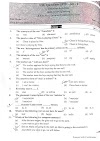Scholarships Available in 2025 for Nepali Students
Practical, no-fluff guide to the top scholarships Nepali students should target in 2025 --> what they cover, how to apply, honest tips that actually work.
Table of contents
Top 5 scholarships Nepali students should watch in 2025
Short list: these are the programs that appear most often on official pages and give the best return on the effort. They are highly competitive but worth the work.
1. Fulbright Foreign Student Program (USA):
Flagship U.S. scholarship for Master's & PhD students. Typical benefits: tuition, living stipend, travel, and health insurance. Strong for research-focused applicants and those planning academic or institutional impact back home.
2. Chevening Scholarships (UK):
UK government fully-funded one-year Master's for emerging leaders. Covers tuition, living allowance, travel and alumni access. Chevening prioritizes leadership potential and measurable impact.
3. Erasmus Mundus Joint Master's (Europe):
Joint Master's across European universities. If awarded, you get a tuition waiver + monthly stipend and travel allowance. Apply to specific EMJM programs, not a single central pool.
4. Australia Awards (DFAT):
Long-standing Australia government scholarships for development-focused postgraduate study. Covers tuition, living allowance, airfare and pre-departure support. Good for public policy, development, agriculture, health sectors.
5. Commonwealth Scholarships (UK / CSC):
Fully-funded Master's & PhD awards for applicants from Commonwealth countries (including Nepal). Focus on development and research impact; often target priority subjects for national development.
Why these five?
Straight talk: these are government or multilateral-level scholarships --> well-funded, officially backed, and listed across trustworthy sources. That means high reward but high competition. If you match eligibility and mission, these are the ones that give the highest return on your application effort.
Short Comparison: What they usually cover?
| Scholarship | Typical coverage |
|---|---|
| Fulbright | Tuition, living stipend, travel, health insurance |
| Chevening | Full tuition, monthly stipend, return flights, allowances |
| Erasmus Mundus | Tuition waiver, monthly stipend, travel & insurance |
| Australia Awards | Tuition, living allowance, airfare, pre-departure support |
| Commonwealth | Tuition, stipend, airfare, research support (where applicable) |
Deadlines & Application Windows:
These programs run annual cycles. Exact dates vary per year and per country. Some open in the autumn (Sept–Nov) and others in the winter/spring (Jan–May). The reliable pattern is to start 9–12 months before your intended intake.
Tip: bookmark the official pages for each program and set calendar reminders as soon as the national call is announced.
How to prioritize your applications:
(don’t spray-and-pray)
- Pick 2–3 “reach” programs + 1 realistic program. Quality over quantity.
- Match purpose to mission. Chevening → leadership & policy; Australia Awards → development sectors; Erasmus → strong academic match; Fulbright → research and community impact.
- Check university-specific awards. After you shortlist programs, look for university scholarships and departmental funding, often easier to receive than national awards.
Application checklist:
- Passport (valid 6+ months)
- Official transcripts (sealed) + translated copies where needed
- Degree certificates / provisional certificate
- CV (2 pages max; achievement-driven bullets)
- Statement of Purpose / Personal Statement --> tailor this to the scholarship
- 2–3 Letters of Recommendation (academic or supervisors)
- English test score (IELTS/TOEFL/DUO) if required
- Research proposal for PhD or research-oriented Master’s
- Proof of community work or professional outcomes for development scholarships
- Carefully completed application forms (save screenshots)
Tactical tips that actually win interviews/selection
- Tell a story & be specific. Replace generic goals with a clear plan: problem → your role → how this program gives tools → measurable outcome back home.
- Evidence beats adjectives. Instead of "I am a leader", show the numbers and outcomes from your leadership.
- Brief your referees. Give them a short brief and bullet points so their letters back your central claims.
- Use alumni. Reach out to past Fellows from Nepal --> they often help with mock interviews and insider tips.
Where to keep searching? (trusted sources)
Always check official program pages first. Secondary sources are fine for alerts, but verify at the source.
- Official program pages (Fulbright / Chevening / Erasmus+ / Australia Awards / Commonwealth)
- Scholarship aggregators --> use them for discovery, then verify
- Local Nepali education portals and university pages --> helpful for Nepal-specific guidance
Common pitfalls (and how to avoid them)
- Copy-paste applications --> tailor each SOP.
- Late or incomplete documents --> scan and verify formats early.
- Weak LORs --> pick recommenders who can provide measurable examples.
- Ignoring eligibility fine print --> check the official guidelines for field or nationality restrictions.
Quick action plan (if you're aiming for 2026 intake)
- Today–1 month: shortlist programs, gather documents, contact referees.
- 1–3 months: draft SOP, CV, research proposal; take language tests.
- 3–6 months: finalize statements, collect LORs, translate transcripts.
- After submission: prepare for interviews — practice storytelling with measurable examples.




![[UPDATED] New Syllabus of IOE Entrance Examination |](https://blogger.googleusercontent.com/img/b/R29vZ2xl/AVvXsEj5C60n4l8guBTBqS4sBFaD1z9AoLPnKFQB_f1-F731bzrW_xcCsoewcBcUtqnpJhlf7lL5sOklAtsxRKdgZ-dCQiAgQb1T2X9ck-D_FYoU01fPdPA0mbsulZgmnkS-6-3Hg_CbxBExwn3z5c3-8srStMoZwr6SrmsgF5fPGjnD29T_lg1XsX3aZoIQm9k/w680/pic.png)


![[UPDATED] New Syllabus of IOE Entrance Examination |](https://blogger.googleusercontent.com/img/b/R29vZ2xl/AVvXsEj5C60n4l8guBTBqS4sBFaD1z9AoLPnKFQB_f1-F731bzrW_xcCsoewcBcUtqnpJhlf7lL5sOklAtsxRKdgZ-dCQiAgQb1T2X9ck-D_FYoU01fPdPA0mbsulZgmnkS-6-3Hg_CbxBExwn3z5c3-8srStMoZwr6SrmsgF5fPGjnD29T_lg1XsX3aZoIQm9k/w100/pic.png)

0 Comments